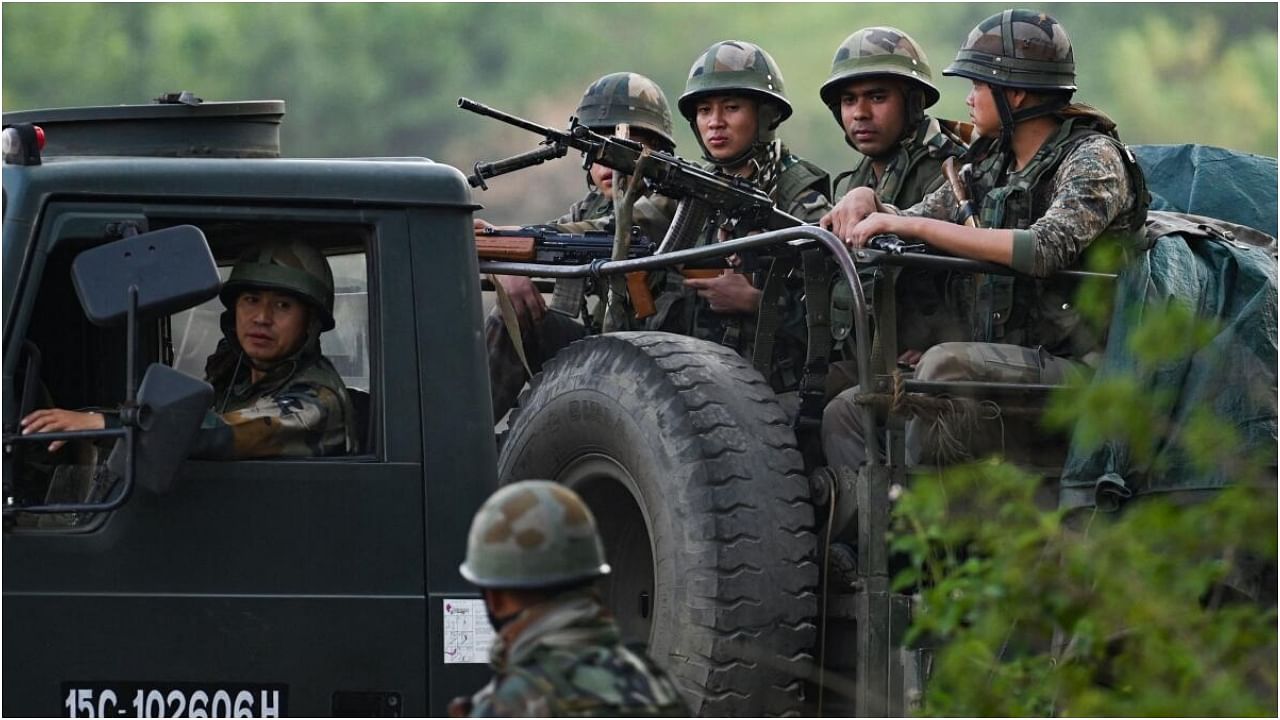
On April 27 Union Home Minister Amit Shah, after signing a peace accord with an insurgent group in Assam, said the Northeast was fast on its way to fulfil Prime Minister Narendra Modi's dream of making it a region free from violence and conflict. Five days later the situation in Manipur turned volatile and clashes between the majority Meitei and the Kuki communities left over 50 dead and many injured. A look at the genesis of the violence, which may be rooted in ethnic fault lines.
How did the violence start?
Violence began on May 3 when All Tribal Students' Union, Manipur enforced a "solidarity march" across Manipur to oppose the BJP government's reported move to accord Scheduled Tribe (ST) status to the Hindu Meiteis, who constitute over 53 per cent Manipur's 35 lakh population. Manipur High Court on April 19 asked the state government to submit a proposal to the Centre seeking ST status for the Meitei community. This comes in the backdrop of an anger that was brewing in the tribal dominated Churachandpur district owing to the BJP government's eviction drives since February to clear the forests from encroachers. The Kukis and Nagas, mostly Christians, were also angry following an eviction and demolition drive in three churches by the administration on the grounds of “illegal construction”. On April 28, a mob vandalised a site hours before Chief Minister N Biren Singh was to arrive for an event.
Why are the Meiteis demanding ST status?
Manipur is divided between hill and valley areas. The hill areas account for 90 per cent of the state’s geography and are inhabited by Naga and Kuki-Chin-Mizo or Zo ethnic tribes. The valley areas are dominated by the non-tribals or the Meiteis community, which despite constituting over half of the population, lives predominantly in Imphal valley that comprise only 10 per cent of the state.
The Meiteis claim that illegal migration from neighbouring Myanmar and Bangladesh has emerged as a threat to their identity. Meiteis can not buy land in the hills districts but the Kukis and Nagas can. The Scheduled Tribe Demand Committee of Manipur have been spearheading an agitation seeking ST status for the community and petitioned Singh, also a Meitei, several times. The ST status will fetch reservation benefits for the Meitei. The tribals oppose such demands.
Are militant groups involved in the violence?
Although no evidence has come out, the Indian Army officials say they suspect involvement of insurgent groups, belonging to both the Meiteis and the Kukis. Several Kuki insurgent groups are in suspension of operation agreement with the government while many Meitei armed groups are still out of the peace process. The army carries out aerial surveillance along the India-Myanmar border as the insurgents taking shelter in Myanmar can add fuel to the ongoing fire. They say the pattern of the violence and the way weapons have been snatched from the security forces suggest involvement of the militants.
Is there involvement of drug smugglers?
Opium cultivation is common in hill districts. This is a worry both for the Centre as well as the Manipur government. After coming to power for the second term last year, the Biren Singh government stepped up its “War on Drugs" campaign. Sources within the Manipur government told DH that those associated with the drug trade could play a role in fanning the violence. The opium cultivated in Manipur's hills is taken to Myanmar via Moreh and the unfenced stretches of the Indo-Myanmar border and subsequently smuggled to the Southeast Asian nations. Security agencies have seized a large quantity of heroin and brown sugar in the last one year.
What’s the situation now?
The situation is still tense but the army and Assam Rifles have said that it is under control. Curfew was relaxed for three hours on Sunday in Churachandpur. The ban on the use of mobile and broadband internet is still in force and 120 to 125 columns of the army and Assam Rifles are working round the clock to establish normalcy.